編輯:Android資訊
之前做過一個項目(隨心壁紙),主要展示過去每期的壁紙主題以及相應的壁紙,而且策劃要求,最好可以動態變換主題呈現方式,這樣用戶體驗會比較好。嗯,好吧,策劃的話,咱們也沒法反駁,畢竟這樣搞,確實很不錯。於是開始去研究這方面的東西。
首先,我想到的是照片牆效果,改變圖片就能有不同的呈現方式。可是這樣的話,文字以及更深層的自定義效果,就無法實現了。然後,思考了下,決定仿照android原生布局文件解析方式,自己去動態解析布局。
先來看下android 原生布局文件解析流程:
第一步:調用LayoutInflater的inflate函數解析xml文件得到一個view,然後來看看inflate函數:
//使用常見的API方法去解析xml布局文件, LayoutInflater layoutInflater = (LayoutInflater)getSystemService(); View root = layoutInflater.inflate(R.layout.main, null,false);
第二步:在inflate函數中,獲取一個XmlResourceParser來解析xml布局文件,再往下跟inflate(parser, root, attachToRoot):
public View inflate(int resource, ViewGroup root, boolean attachToRoot) {
if (DEBUG) System.out.println("INFLATING from resource: " + resource);
XmlResourceParser parser = getContext().getResources().getLayout(resource);
try {
return inflate(parser, root, attachToRoot);
} finally {
parser.close();
}
}
第三步:inflate函數中會根據布局的節點名創建根視圖,接著根據方法中傳進來的root參數,判斷是否為空,如果不為null,則為該根視圖賦予外面父視圖的布局參數。接著調用rInflate函數來為根視圖添加所有字節點。
public View inflate(XmlPullParser parser, ViewGroup root, boolean attachToRoot) {
synchronized (mConstructorArgs) {
final AttributeSet attrs = Xml.asAttributeSet(parser);
Context lastContext = (Context)mConstructorArgs[0];
mConstructorArgs[0] = mContext; //該mConstructorArgs屬性最後會作為參數傳遞給View的構造函數
View result = root;
try {
// Look for the root node.
int type;
while ((type = parser.next()) != XmlPullParser.START_TAG &&
type != XmlPullParser.END_DOCUMENT) {
// Empty
}
if (type != XmlPullParser.START_TAG) {
throw new InflateException(parser.getPositionDescription()
+ ": No start tag found!");
}
final String name = parser.getName(); //節點名,即API中的控件或者自定義View完整限定名
if (TAG_MERGE.equals(name)) {
if (root == null || !attachToRoot) {
throw new InflateException("<merge /> can be used only with a valid "
+ "ViewGroup root and attachToRoot=true");
}
rInflate(parser, root, attrs, false);
} else {
// Temp is the root view that was found in the xml
View temp;
if (TAG_1995.equals(name)) {
temp = new BlinkLayout(mContext, attrs);
} else {
temp = createViewFromTag(root, name, attrs);
}
ViewGroup.LayoutParams params = null;
if (root != null) {
// Create layout params that match root, if supplied
params = root.generateLayoutParams(attrs);
if (!attachToRoot) {
// Set the layout params for temp if we are not
// attaching. (If we are, we use addView, below)
temp.setLayoutParams(params);
}
}
// Inflate all children under temp
rInflate(parser, temp, attrs, true);
// We are supposed to attach all the views we found (int temp)
// to root. Do that now.
if (root != null && attachToRoot) {
root.addView(temp, params);
}
// Decide whether to return the root that was passed in or the
// top view found in xml.
if (root == null || !attachToRoot) {
result = temp;
}
}
} catch (XmlPullParserException e) {
//...
} finally {
// Don't retain static reference on context.
mConstructorArgs[0] = lastContext;
mConstructorArgs[1] = null;
}
return result;
}
}
第四步:rInflate方法中主要是去遞歸調用布局文件根視圖的子節點。將解析得到的view添加到parentView。
/**
* Recursive method used to descend down the xml hierarchy and instantiate
* views, instantiate their children, and then call onFinishInflate().
*/
void rInflate(XmlPullParser parser, View parent, final AttributeSet attrs,
boolean finishInflate) throws XmlPullParserException, IOException {
final int depth = parser.getDepth();
int type;
while (((type = parser.next()) != XmlPullParser.END_TAG ||
parser.getDepth() > depth) && type != XmlPullParser.END_DOCUMENT) {
if (type != XmlPullParser.START_TAG) {
continue;
}
final String name = parser.getName();
if (TAG_REQUEST_FOCUS.equals(name)) { //處理<requestFocus />標簽
parseRequestFocus(parser, parent);
} else if (TAG_INCLUDE.equals(name)) { //處理<include />標簽
if (parser.getDepth() == 0) {
throw new InflateException("<include /> cannot be the root element");
}
parseInclude(parser, parent, attrs); //解析<include />節點
} else if (TAG_MERGE.equals(name)) { //處理<merge />標簽
throw new InflateException("<merge /> must be the root element");
} else if (TAG_1995.equals(name)) { //處理<blink />標簽
final View view = new BlinkLayout(mContext, attrs);
final ViewGroup viewGroup = (ViewGroup) parent;
final ViewGroup.LayoutParams params = viewGroup.generateLayoutParams(attrs);
rInflate(parser, view, attrs, true);
viewGroup.addView(view, params);
} else {
//根據節點名構建一個View實例對象
final View view = createViewFromTag(parent, name, attrs);
final ViewGroup viewGroup = (ViewGroup) parent;
//調用generateLayoutParams()方法返回一個LayoutParams實例對象,
final ViewGroup.LayoutParams params = viewGroup.generateLayoutParams(attrs);
rInflate(parser, view, attrs, true); //繼續遞歸調用
viewGroup.addView(view, params); //OK,將該View以特定LayoutParams值添加至父View
}
}
if (finishInflate) parent.onFinishInflate(); //完成解析過程,通知..
}
在rInflate方法的37行代碼中,final View view = createViewFromTag(parent, name, attrs),由節點名等參數構建的一個view實例對象,由於下面的代碼會越來越大,就直接貼出主要實現函數,具體可參見Android源碼。
/**
* default visibility so the BridgeInflater can override it.
*/
View createViewFromTag(View parent, String name, AttributeSet attrs) {
//...
try {
//...
if (view == null) {
if (-1 == name.indexOf('.')) {
view = onCreateView(parent, name, attrs);
} else {
view = createView(name, null, attrs);
}
}
return view;
} catch (InflateException e) {
//...
}
}
然後再往onCreateView()中跟下去,會發現,它其實主要還是實現了createView();所以我們直接CreateView實現。
protected View onCreateView(String name, AttributeSet attrs)
throws ClassNotFoundException {
return createView(name, "android.view.", attrs);
}
在createView(name, “android.view.”, attrs)中,會用反射機制創建android.view.XXX(比如TextView)的實例對象,並返回。
這也就是LayoutInflater.inflate的布局解析流程了。
當你熟悉了流程,接下來為你講解的,隨心壁紙的動態解析布局思路,你就基本懂的大半了!
由於最初的layoutInflater.inflate(R.layout.main, null,false)函數,傳入的是R.layout.main資源id,而對於我們的項目,布局文件是在線更新的,是間接存儲在sd卡中,所以這種解析方式就不行了,所幸LayoutInflater的api方法還提供了inflate(XmlPullParser parser, ViewGroup root,boolean attachToRoot)解析,根據文件保存路徑生成需要的xmlPullParser:
public XmlPullParser getXmlPullParser(String resource) {
XmlPullParser parser = Xml.newPullParser();
try {
// InputStream is=mContext.getAssets().open("transfer_main.xml");
FileInputStream is = new FileInputStream(resource);
parser.setInput(is, "utf-8");
} catch (Exception e) {
e.printStackTrace();
}
return parser;
}
後面的第二步等其實都是一樣的流程(我會在後面貼出實現demo)。但是有一點需要特別注意,也是必須實現的一點:
因為所下載的布局文件得到的解析流,跟程序裡res/layout/xxx.xml有一個非常大的不同,資源id!!程序中的布局文件,裡面所注冊的id以及text,或者drawble都是可以真實在R目錄下找到的,而下載的布局文件是沒有這個福利的,它是我們外面生成的,並沒有經過apk編譯過程。所以為了能得到下載文件裡的布局各個id,我們需要自己實現對View的屬性解析。
protected View onCreateView(String name, AttributeSet attrs)
throws ClassNotFoundException {
// return createView(name, "android.view.", attrs);
return createView(name, "com.xxx.xxxx.viewanalysis.view.VA", attrs); //比如com.xx.view.VATextView 項目中自定義view 繼承自TextView
}
布局中的控件代碼編寫,可以是TextView等原生的,也可以是自定義過的,因為TextView經過加前綴,再通過後面的反射方法,也會跑到相應的自定義方法,返回一個自定義View對象。不過因為最終都是要跑自定義view,所以要求我們需要事先定義好會用到的,目前我定義好了9種,比如Button,GridView,RelativeLayout等。如果沒有定義的view直接用在文件中,會導致編譯出錯(ClassNotFoundException)。
VAButton類實現:
public class VAButton extends android.widget.Button {
public VAButton(Context context, AttributeSet attrs) {
super(context);
setAttributeSet(attrs);
}
@SuppressWarnings("deprecation")
public void setAttributeSet(AttributeSet attrs) {
HashMap<String, ParamValue> map = YDResource.getInstance().getViewMap();
int count = attrs.getAttributeCount();
for (int i = 0; i < count; i++) {
ParamValue key = map.get(attrs.getAttributeName(i));
if (key == null) {
continue;
}
switch (key) {
case id:
this.setTag(attrs.getAttributeValue(i));
break;
case text:
String value = YDResource.getInstance().getString(
attrs.getAttributeValue(i));
this.setText(value);
break;
//case...
default:
break;
}
}
}
Ps: view id通過設置標志在外面可以獲取到(具體可以看demo)
屬性方面的解析,我就不多說了,網上的資料很多,有興趣的可以去了解下。
demo效果圖:
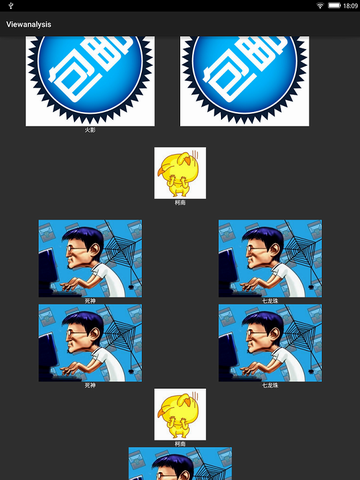
項目中的效果圖:


接下來看看demo中的代碼結構:
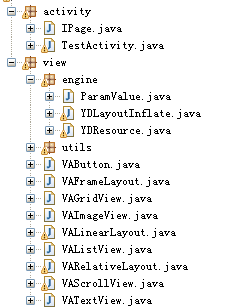
這裡的代碼主體在於YDLayoutInflater與ParamValue的實現,以及9種自定義view。
YDLayoutInflater主要是仿照LayoutInflater實現的,做了一些適應布局文件的修改處理,上面已經說過了。
具體的代碼下載地址
動態解析布局的思路講完了,應用到項目中,效果也不錯,雖然有一些限制規范,但是對於總體的功能設計是無關大雅的。關於主題呈現動態更新,如果有大神有更好的方式,請私信我哦!
 22 個 Android Studio 優秀插件匯總
22 個 Android Studio 優秀插件匯總
第一部分 插件的介紹 Google 在2013年5月的I/O開發者大會推出了基於IntelliJ IDEA java ide上的Android Studio。An
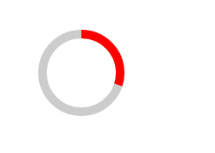 Android自定義控件系列之圓形進度條的實現
Android自定義控件系列之圓形進度條的實現
一、概述 在上一篇博文中,我們給大家介紹了Android自定義控件系列的基礎篇。鏈接:http://www.codeceo.com/article/android
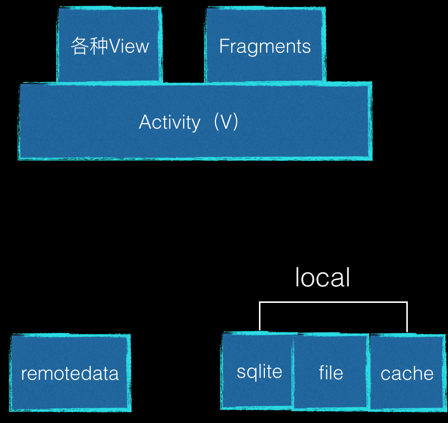 Android應用開發架構概述
Android應用開發架構概述
通常一個App的成長過程都是這樣的: 第一階:先用最少的成本和時間快速把東西做出來。 第二階段:積累一定用戶量之後在小步快跑的迭代功能。 第三階段:性能和體驗上逐
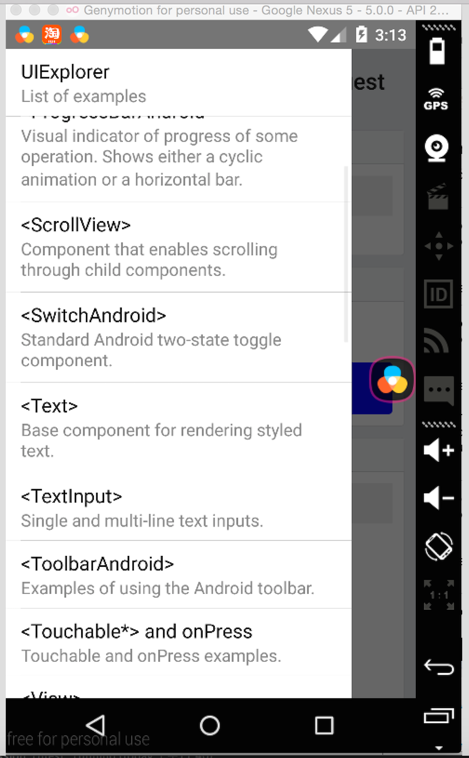 Android 端 10 個最常見問題
Android 端 10 個最常見問題
這裡逐條記錄下最容易遇到的 React native android 相關case 1.app啟動後,紅色界面,unable load jsbundle 解決辦法